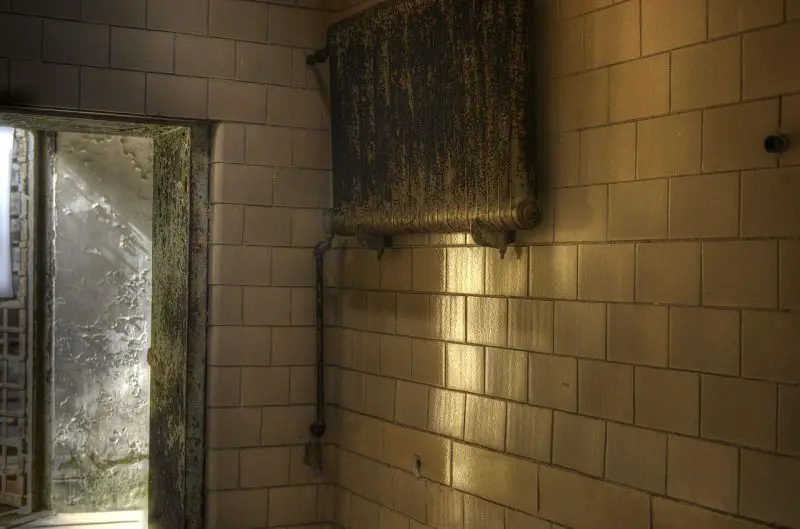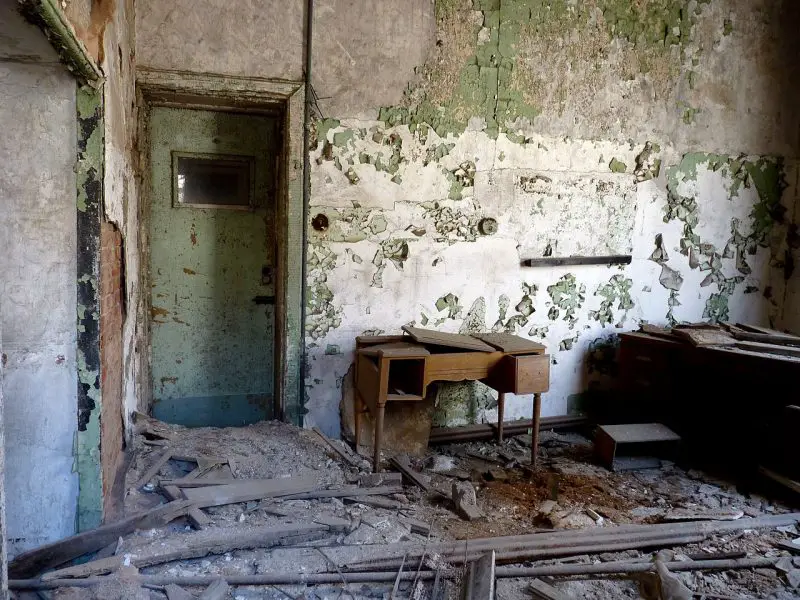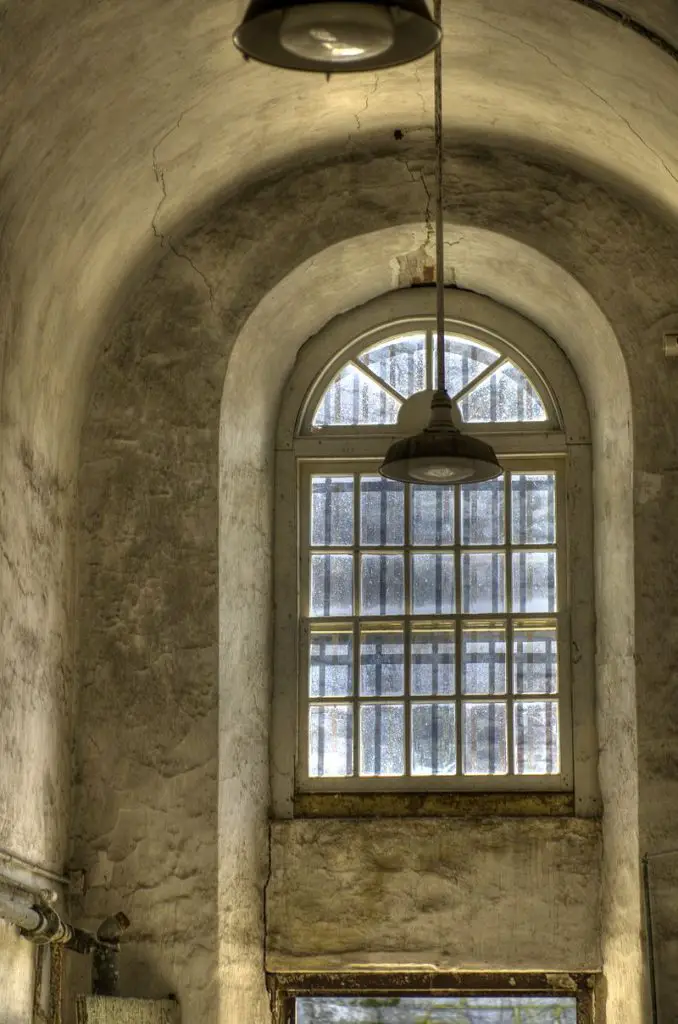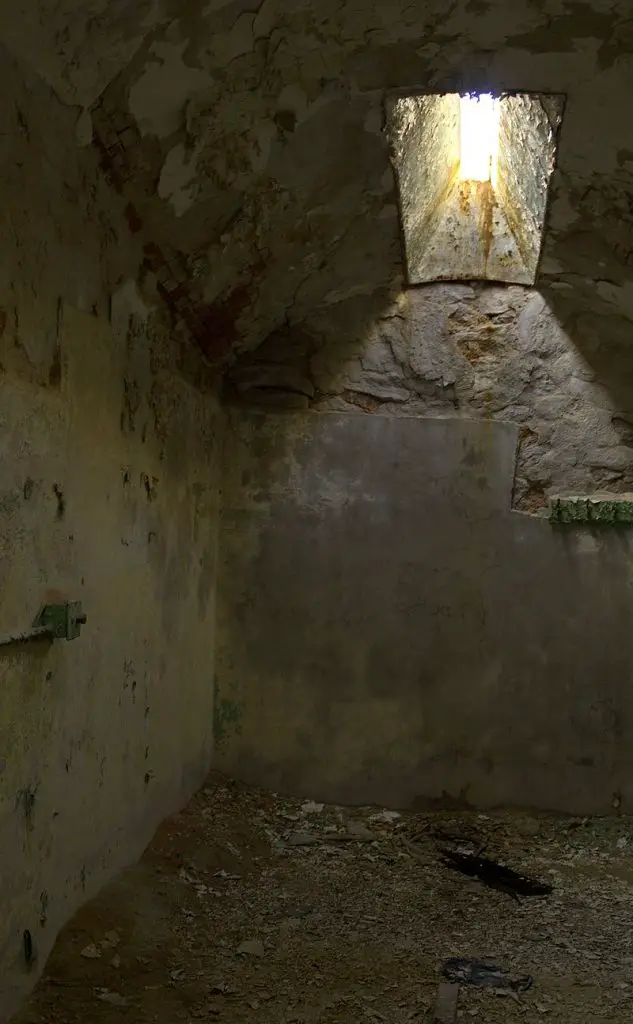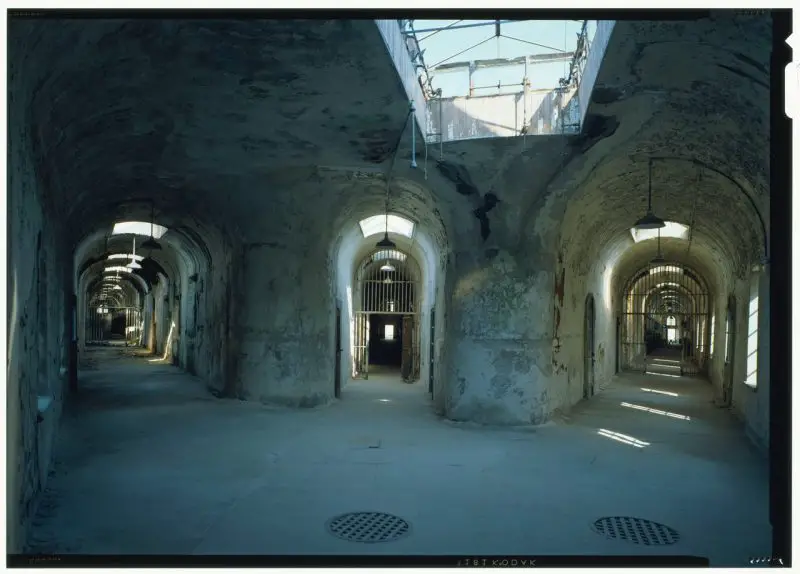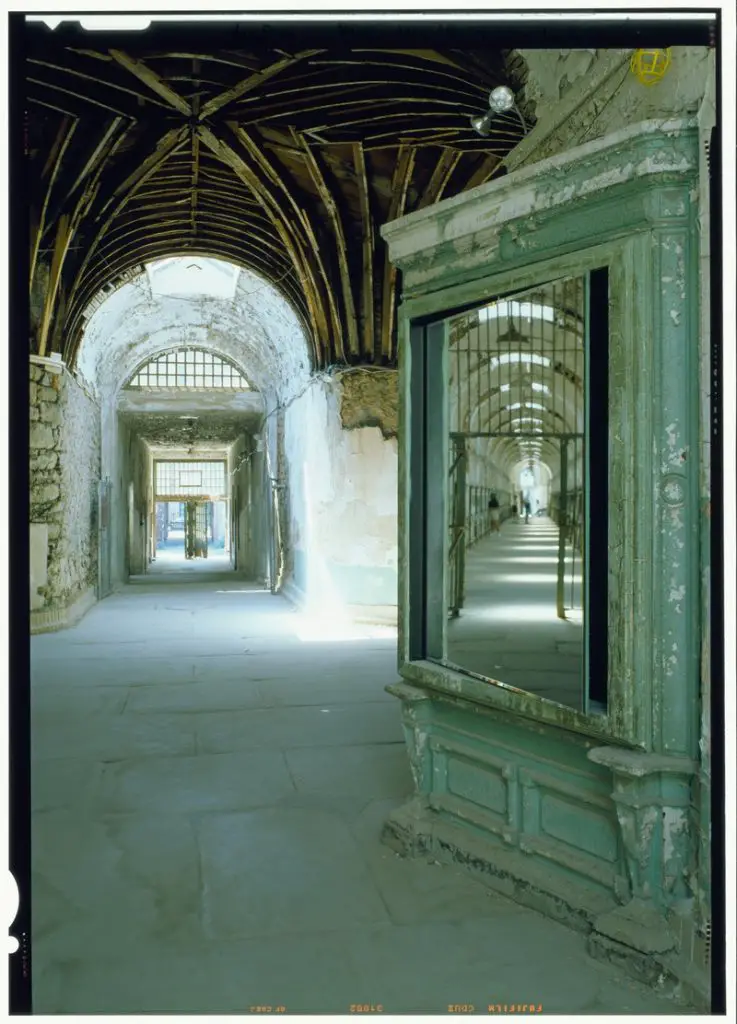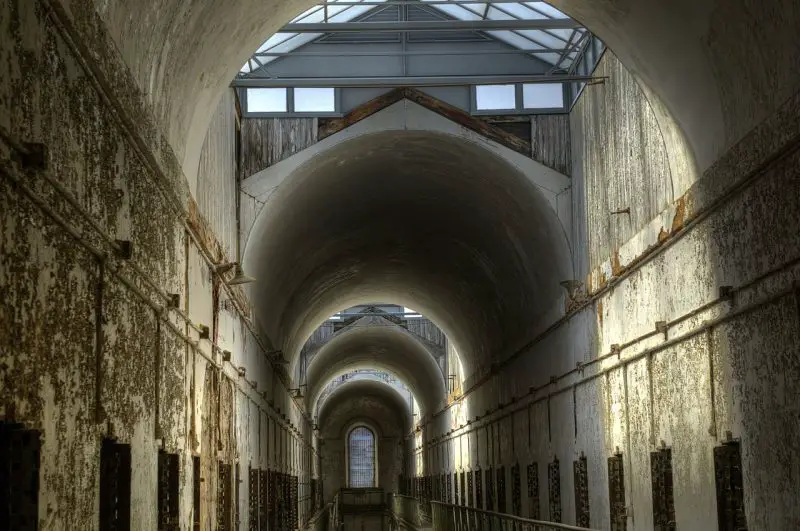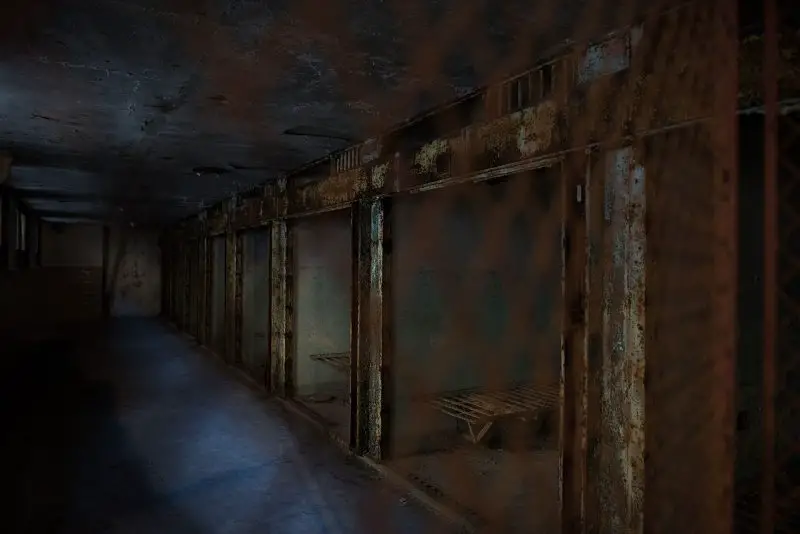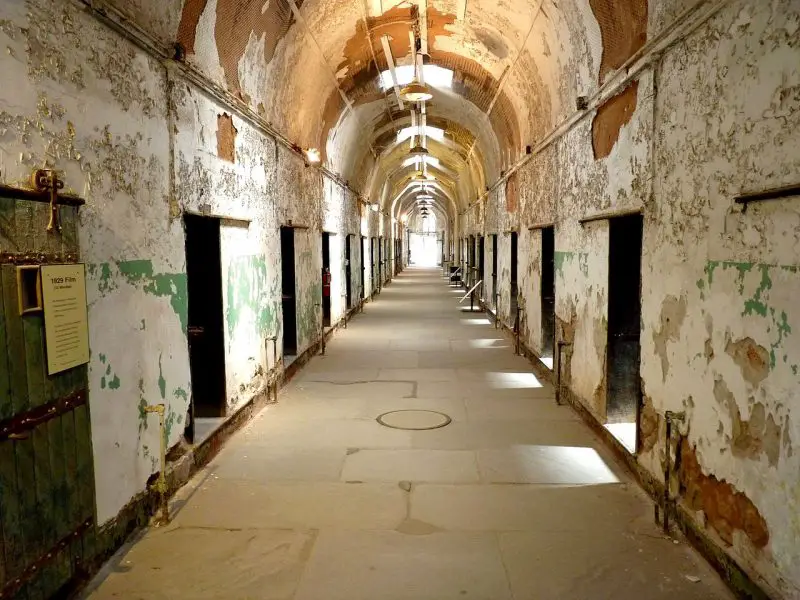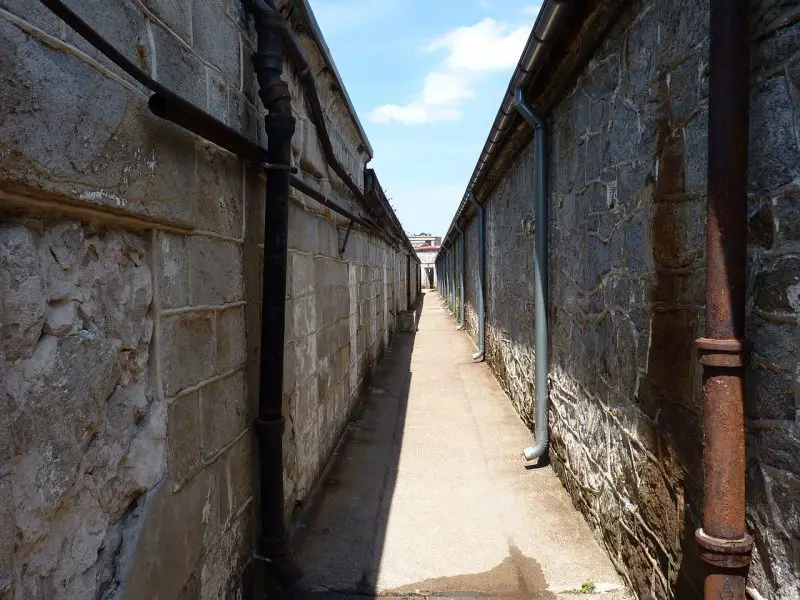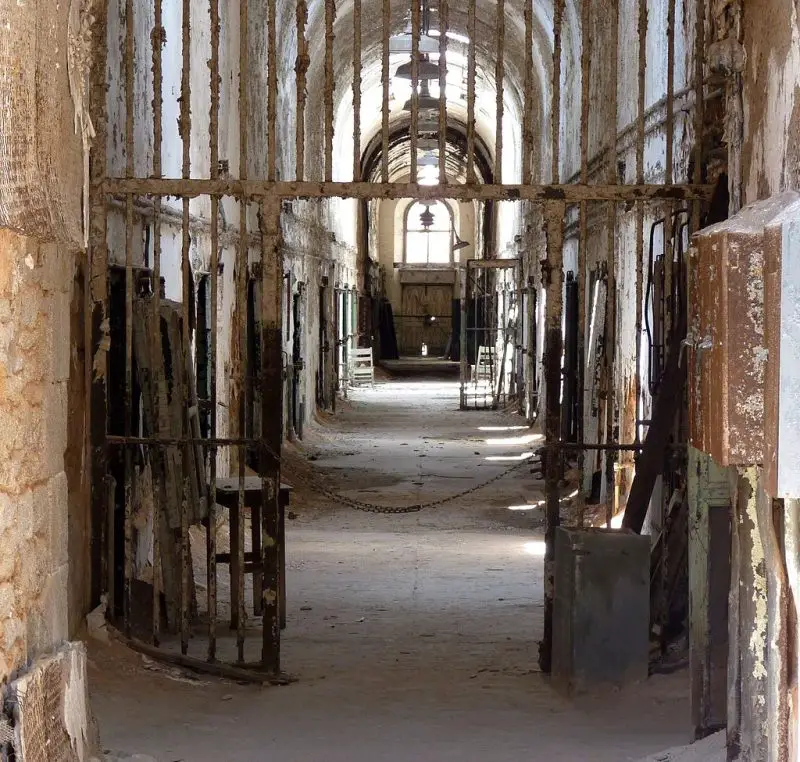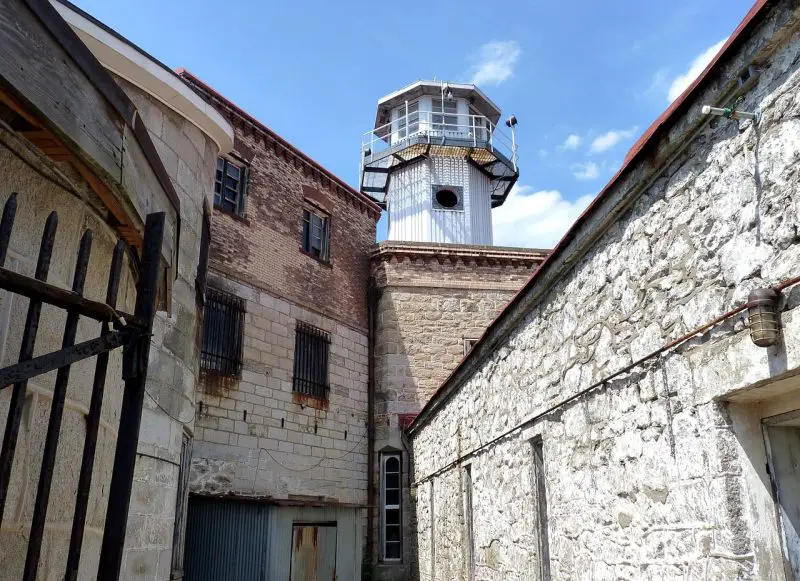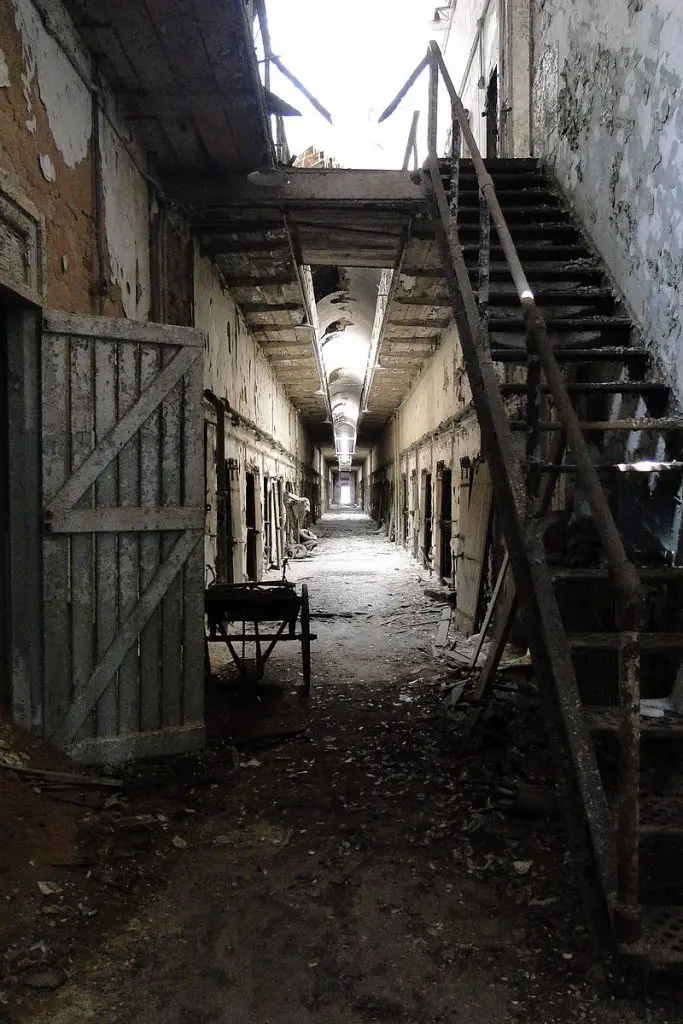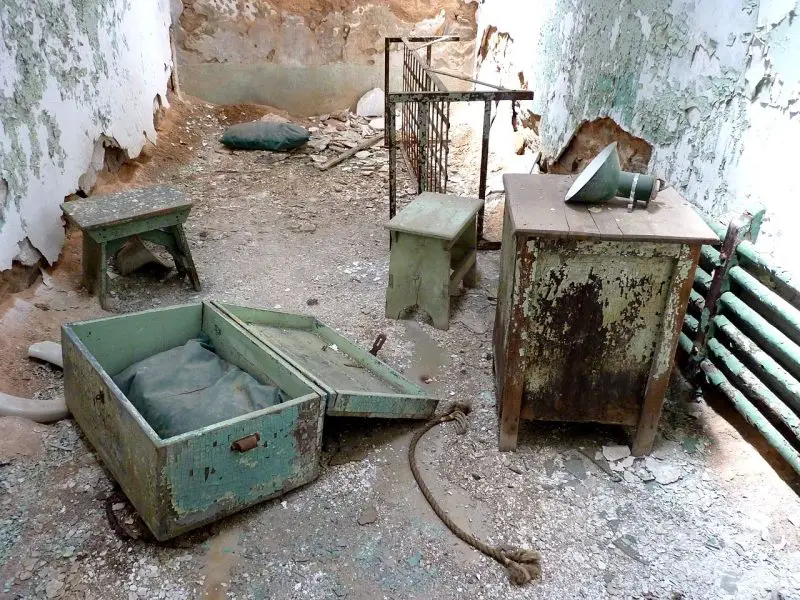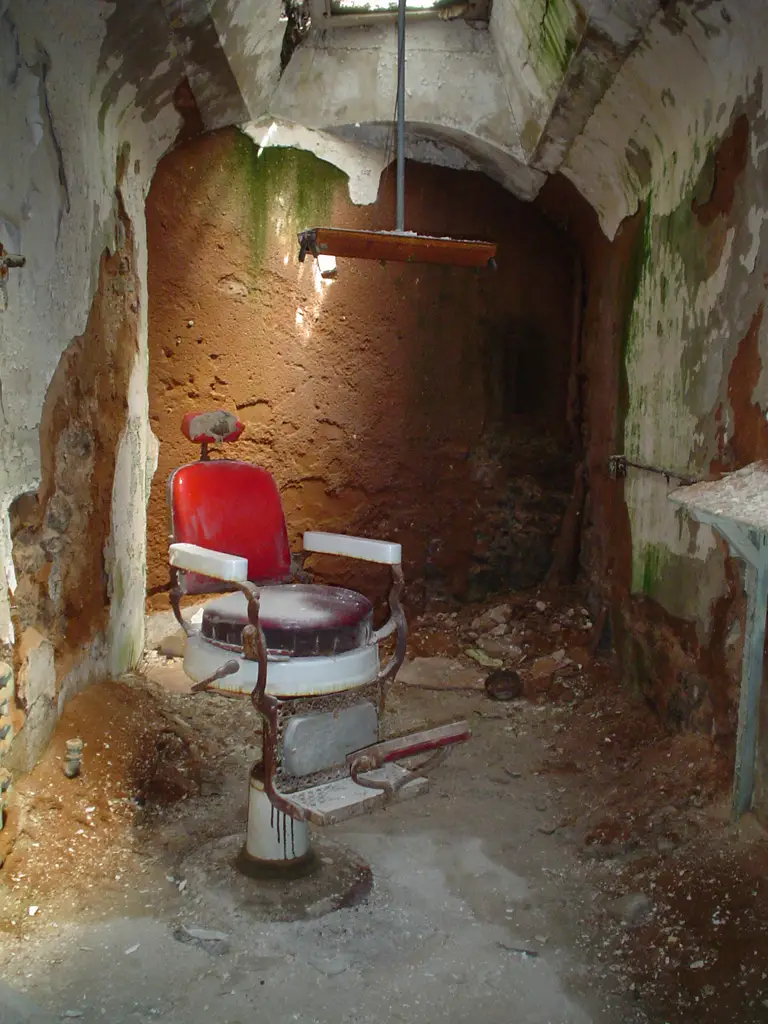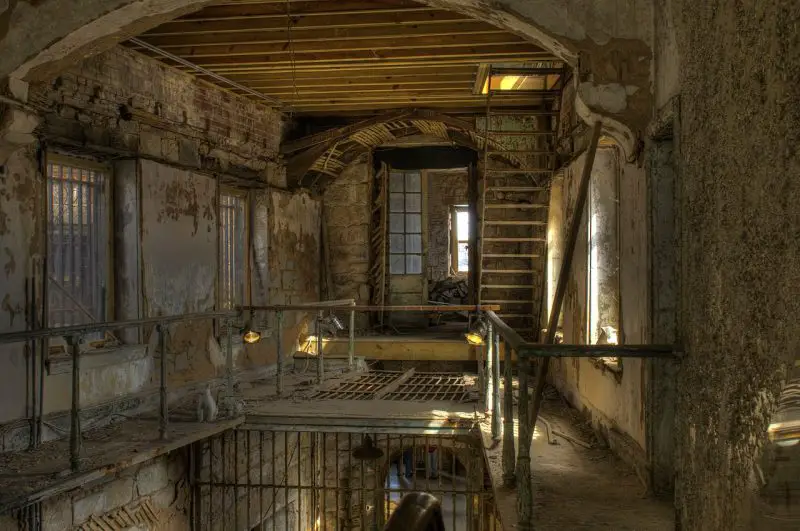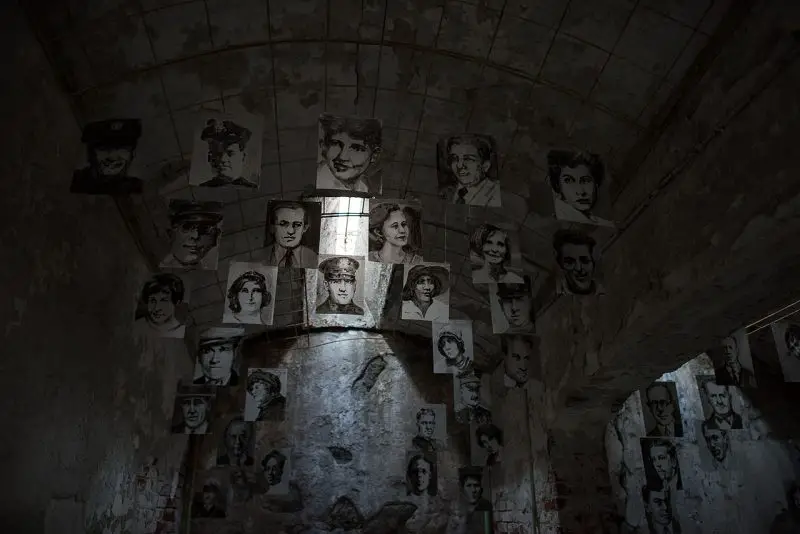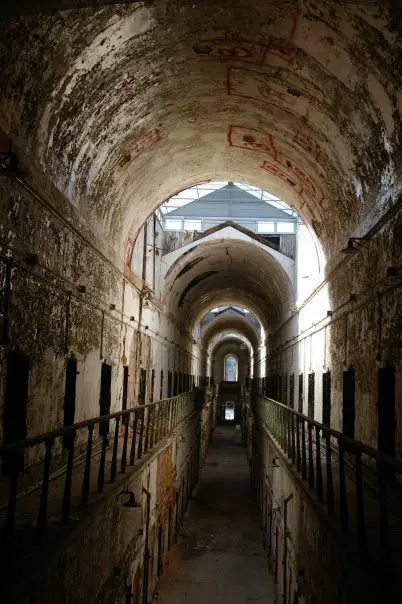Eastern State, created by architect John Haviland and established on October 25, 1829, is often hailed as the world’s first true prison. The revolutionary incarceration system at Eastern State, known as the “Pennsylvania system” or separate system, aimed to rehabilitate inmates through solitary confinement. In this system, the warden had to visit each inmate daily, while overseers were required to check on them three times a day.
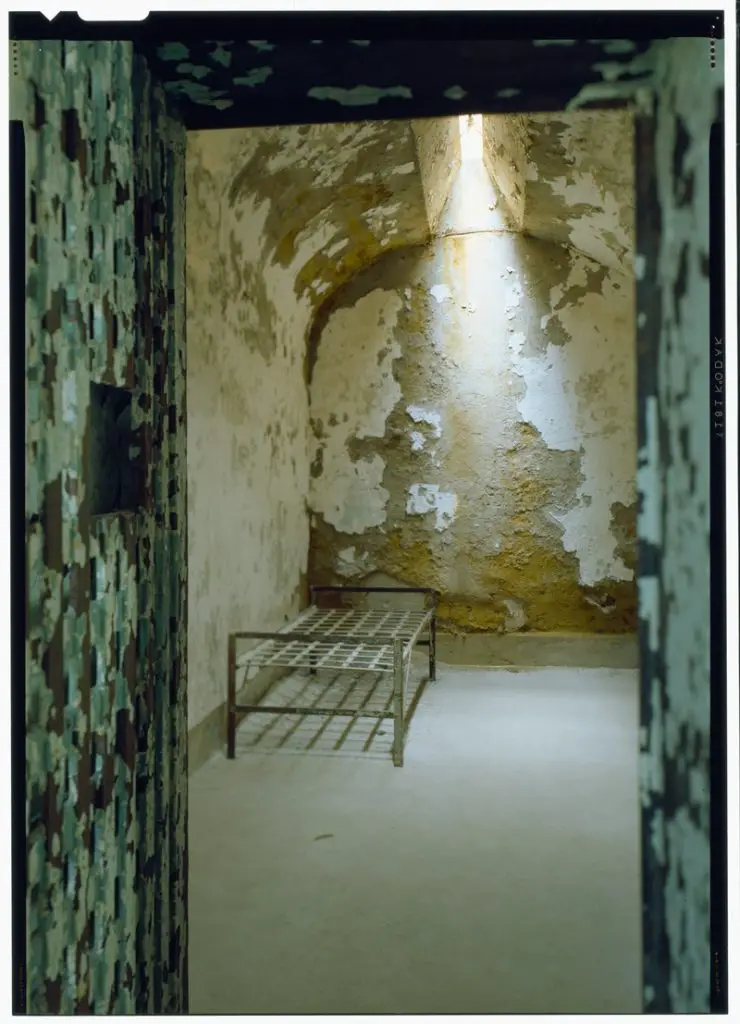
At the same time, the Auburn system (also called the New York system) presented an opposing view. It believed that prisoners should work together in silence and endure physical punishment. Sing Sing prison exemplified the Auburn system. Although the Auburn system gained popularity in the U.S., Eastern State’s unique radial floor layout and solitary confinement model became a blueprint for more than 300 institutions worldwide.
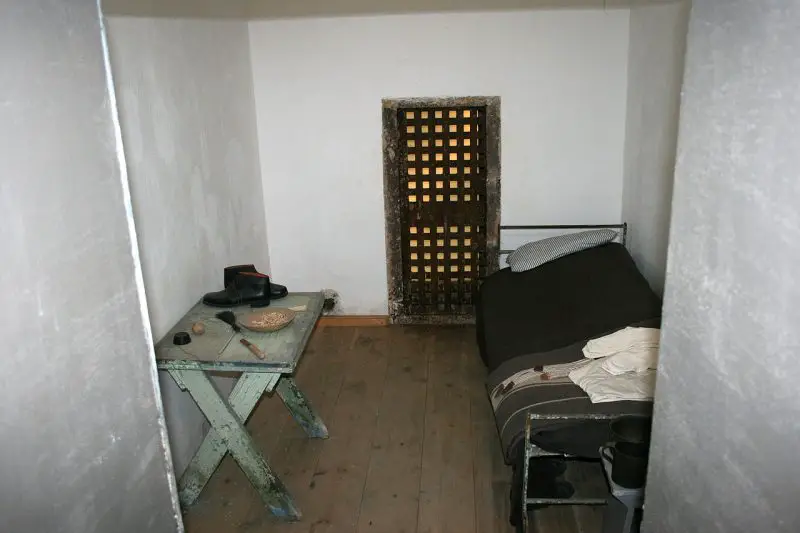
Originally, inmates were held in cells accessible through a small exercise yard behind the jail. This approach proved impractical, leading to the construction of cells in the center of the building. This design allowed convicts to enter and exit their cells through metal doors covered by thick wooden doors to minimize noise. The halls were designed reminiscent of a church.
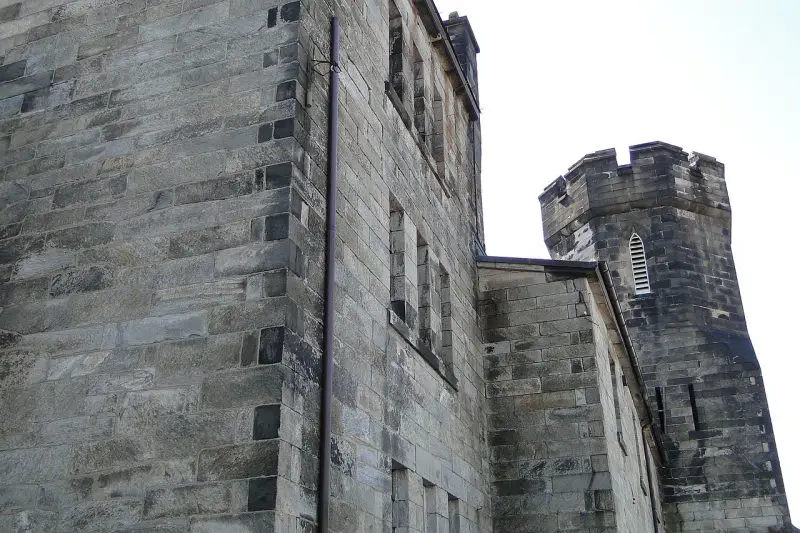
During the 19th century, the prison became a prominent public project and a tourist attraction. Notable figures like Charles Dickens and Alexis de Tocqueville visited, while famous convicts like Willie Sutton and Al Capone were incarcerated there in 1929. Tourists engaged with prisoners in their cells, showing that inmates weren’t completely isolated, even though they couldn’t contact their families or friends.
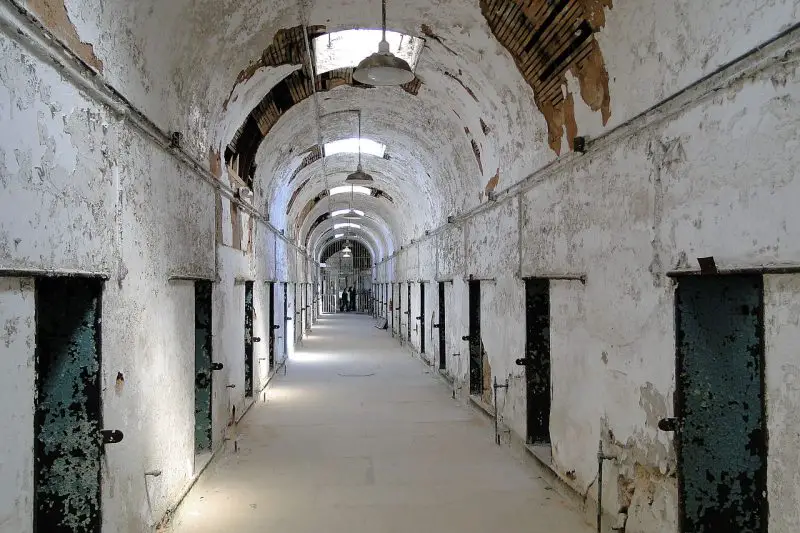
Charles Dickens, after visiting the jail in 1842, remarked, “The regime here is severe, strict, and dismal solitary imprisonment.” He criticized the mental toll it took, considering it worse than physical pain. The majority of early inmates were minor criminals convicted of theft-related crimes, and first-time offenders often received two-year sentences.
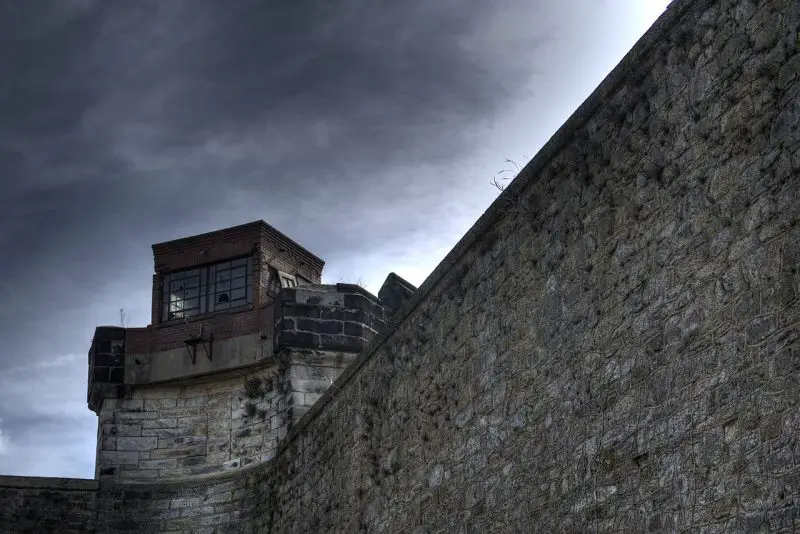
The Penitentiary aimed not only to punish but also to encourage introspection and reform. The Pennsylvania System was associated with Quakers, but the Society for Alleviating the Miseries of Public Prisons, which spearheaded Eastern State’s creation, had diverse leadership. The idea was that silent reflection on their actions would lead convicts to genuine remorse.
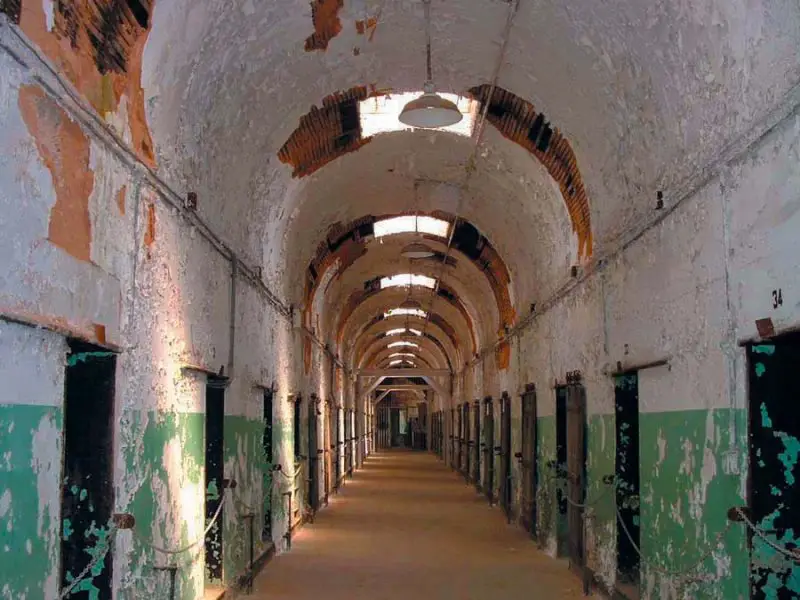
In reality, guards and counselors employed various forms of physical and psychological torment for infractions. The narrow doors were theorized to prevent attacks on guards, while the overall design reflected penance and religion, with cells featuring a single glass skylight symbolizing the “Eye of God.”
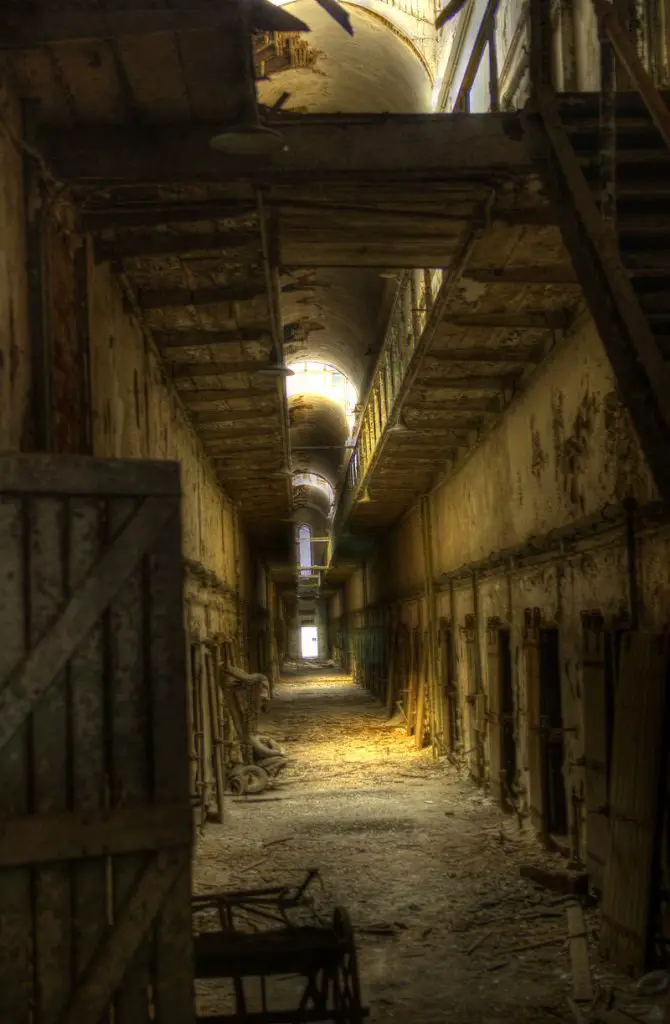
Outside the cells, separate exercise yards with high walls prevented communication between inmates. Each prisoner’s exercise time was scheduled to avoid overlap. Despite the strictness, prisoners were allowed to plant and care for pets. Guards covered a prisoner’s head when moving them to prevent recognition.
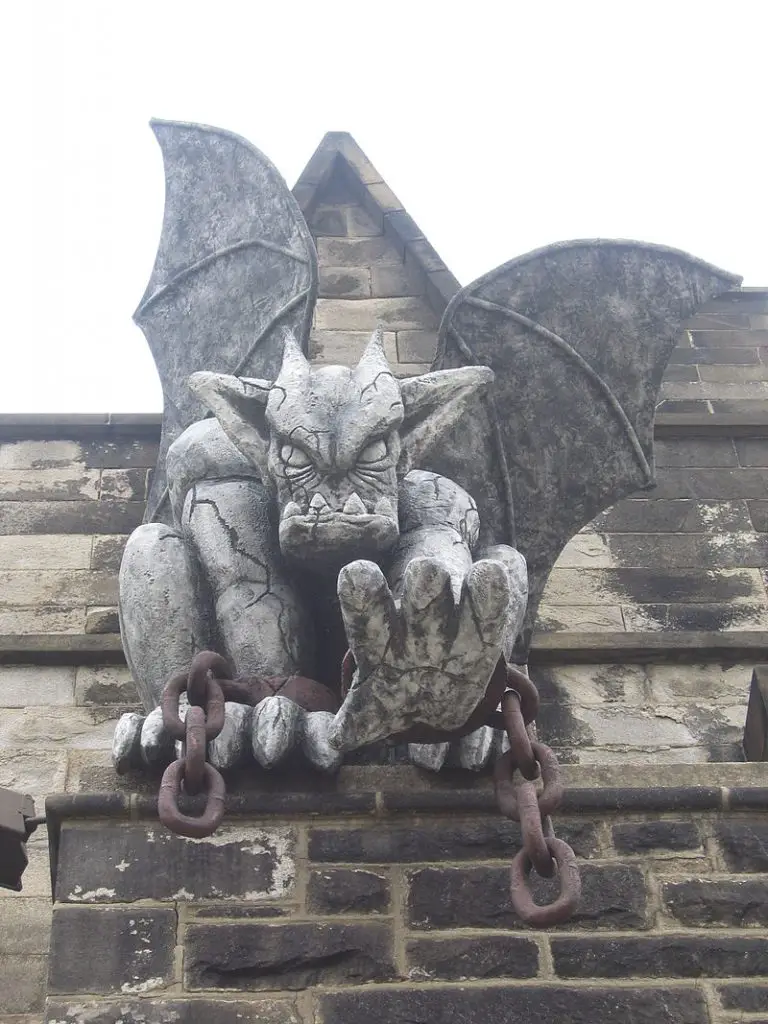
Cell amenities were advanced for their time, including running water and central heating. Cellblocks expanded due to overcrowding, with later blocks having two stories. The jail closed in 1971, later becoming a museum and historic site. Tours, including those narrated by Steve Buscemi, offer insights into its history, and there’s even a scavenger hunt for children.
